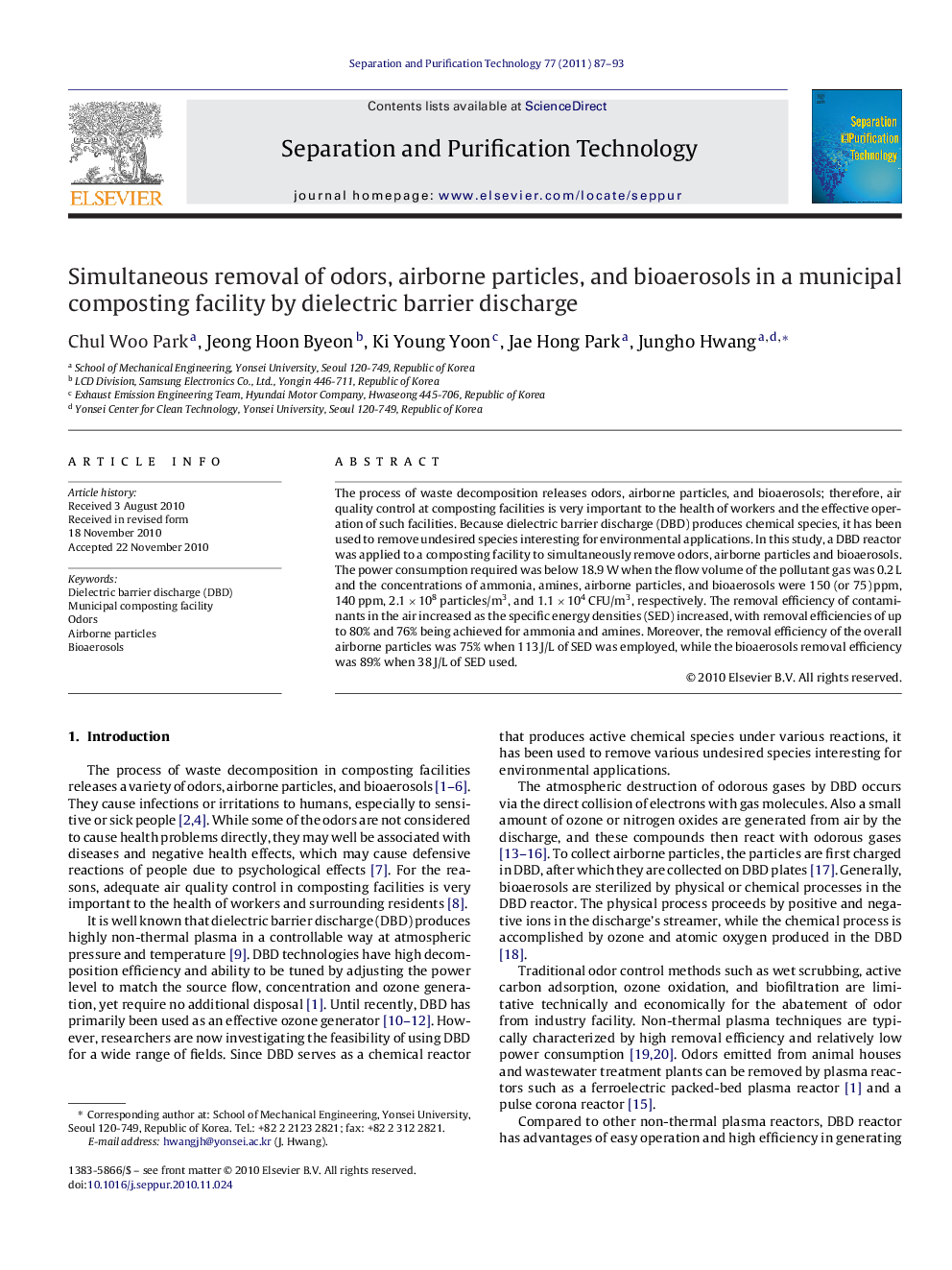| کد مقاله | کد نشریه | سال انتشار | مقاله انگلیسی | نسخه تمام متن |
|---|---|---|---|---|
| 642848 | 884342 | 2011 | 7 صفحه PDF | دانلود رایگان |

The process of waste decomposition releases odors, airborne particles, and bioaerosols; therefore, air quality control at composting facilities is very important to the health of workers and the effective operation of such facilities. Because dielectric barrier discharge (DBD) produces chemical species, it has been used to remove undesired species interesting for environmental applications. In this study, a DBD reactor was applied to a composting facility to simultaneously remove odors, airborne particles and bioaerosols. The power consumption required was below 18.9 W when the flow volume of the pollutant gas was 0.2 L and the concentrations of ammonia, amines, airborne particles, and bioaerosols were 150 (or 75) ppm, 140 ppm, 2.1 × 108 particles/m3, and 1.1 × 104 CFU/m3, respectively. The removal efficiency of contaminants in the air increased as the specific energy densities (SED) increased, with removal efficiencies of up to 80% and 76% being achieved for ammonia and amines. Moreover, the removal efficiency of the overall airborne particles was 75% when 113 J/L of SED was employed, while the bioaerosols removal efficiency was 89% when 38 J/L of SED used.
Figure optionsDownload as PowerPoint slideResearch highlights▶ The dielectric barrier discharge (DBD) reactor showed good performance for simultaneously removing odors, airborne particles, and bioaerosols from the air emitted from a municipal composting facility. ▶ The power consumption required was below 18.9 W when the flow volume of the pollutant gas was 0.2 L and the concentrations of ammonia, amines, airborne particles, and bioaerosols were 150 (or 75) ppm, 140 ppm, 2.1 × 108 particles/m3, and 1.1 × 104 CFU/m3, respectively. ▶ Ammonia, amines, airborne particles, and bioaerosols removal efficiencies of up to 80%, 76%, 75%, and 89%, respectively, were obtained under various experimental conditions.
Journal: Separation and Purification Technology - Volume 77, Issue 1, 2 February 2011, Pages 87–93